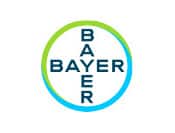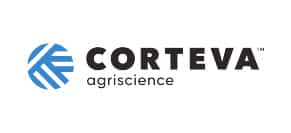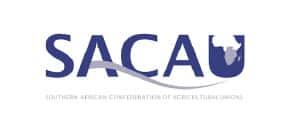You don’t need an MBA to start a business. But, do you sometimes wish that someone would just give you a roadmap to guide your way?
Economics for Business (E4B), a project by the Mises Institute, has done exactly that. With a focus on the Value-Centric Business Model, their goal is to help entrepreneurs “build a beautiful business on deep knowledge of economics,” and one of their valuable tools is the Entrepreneurial GPS. (Download a printable outline of the Entrepreneurial GPS here.)
The team at Economics for Business (E4B) divides the entrepreneurial journey into seven phases. Each phase has several frontiers. The frontiers serve as a checklist of activities, processes, and considerations on your journey as an entrepreneur.
It is clean and neat. However, in the real world, you will find that the phases overlap. Parts of one phase will spill into another.
The purpose of the tool is to help you focus when things get confusing, to make sure you don’t miss anything important.
Imagination Phase
“The role of the entrepreneur is to imagine a set of future conditions in which customers are more satisfied than today, and which the entrepreneur can organize for a profitable outcome,” says E4B.
During this phase you do a self-assessment, identify dissatisfaction in your market, and create an imaginary construct of your business. Then you do validation research to prove your business concept, subject it to peer evaluation, and refine the idea until it is solid.
Design Phase
Following the N-A-B-C method, start by asking “What is the important customer and market need?” and “What is your unique approach for addressing this need?”
Do you have it clearly in mind? Yes? Then it is time to design your business. E4B says, “identify and integrate all the components you will require to deliver value to the customer.”
These components, amongst others, include designing your business model, analysing your customer landscape, and designing the processes you will use create your products, interact with clients and manage your business.
What are the timelines you are looking at? How will you handle staffing and labour? Who will be your partners and suppliers? What is the legal and organizational structure of your business? What will your brand look like, and how will you approach marketing?
Designing your business properly will help to save you money. Fixing mistakes on paper is much cheaper than replacing a machine that does not meet your needs?
Assembly Phase
You have the design. Now you have to bring all the different parts together. Ask yourself, “What assets, resources, capabilities and competencies do I need to connect to get a product or service into the market that will facilitate value for my customers?”
In the assembly phase it is time to get the ball rolling. Get the contracts and agreements signed. Bring in funding. Assemble your staff, machines, and processes. Switch on the supply chain. Put in place cost accounting, payment systems and control systems.
Remember the goal: VALUE for the customer.
You do not have to start with branded offices, a fleet of vehicles and a coffee machine. You just need enough of your core processes working to go to market with an offering your customers will value.
Marketing Phase
“Marketing is the orientation of the entire business towards the customer,” says E4B.
Marketing is not just about selling. Rather think of marketing as a relationship you build with your customers, with your staff and with your suppliers. Every relationship is a connection with your company that is either short-lived, or long and profitable.
During the Marketing Phase you “identify with the customer’s POV in order to steer innovative new solutions for customers, present them, communicate them, and continue to engage and listen for acceptance and ideas for improvement,” says E4B
Customer Experience Phase
“Value lies in the customer’s experience. When their experience meets or even exceeds their expectations, they become buyers, then repeat buyers and loyal buyers. Revenues flow directly from the customer’s experience. Businesses must empathize with customers’ anticipated experience, actual experience, and their post-evaluation,” states the Entrepreneurial GPS.
In the Value-Centric Business Model, everything hinges on customer experience. The value your customer perceives is the only value that exists. And a repeat customer is far more profitable than finding a new one.
Management and Growth Phase
Congratulations! Your business model is proven, you have some happy customers who feel that you listen to their needs, and your processes are profitable. Now you enter the Management and Growth Phase.
“Active and customer-empathic management, continuous perceived value monitoring and continuous improvement and innovation will facilitate business growth,” according to E4B.
Consider your product and service portfolio and design a growth strategy. Determine if you need to merge with another player or buy out partners that do not offer value anymore. What is the day-to-day employee management concerns? And should your organization restructure?
Between product innovations, finance, regulatory concerns, and compliance, managing a business for growth is a massive task.
Disposition Phase
Disposition deals with getting rid of a business or assets in the business. It may be time to cash-in for retirement, or it may become necessary to liquidate the business if it is not profitable anymore. Disposition also comes into play when you need to buy out partners as you grow.
Planning for an exit event when your business is still young, will give you the tools and the confidence you need to deal with the situation when it happens.
Exit planning, debt restructuring, mergers and acquisitions, valuation, regulation and compliance, and contracts and agreements all come into play during this phase.
In conclusion, understanding the different phases of the entrepreneurial journey will make it easier to see your blind spots. And with a handy tool like the Entrepreneurial GPS by your side, you can minimise the uncertainty that comes with building your business.
Can you use the Entrepreneurial GPS to design an agrifood venture with the potential to scale?
Embrace the biggest opportunity in Africa! Bring your energy, courage and creativity to the GoGettaz Agripreneur Prize Competition and build your business.
The 2021 GoGettaz Agripreneur Prize Competition is open, and we want to hear from you. Follow GoGettaz and Generation Africa on LinkedIn, Twitter, Facebook, and Instagram to stay up to date with the latest developments in the 2021 GoGettaz Agripreneur Prize Competition.













